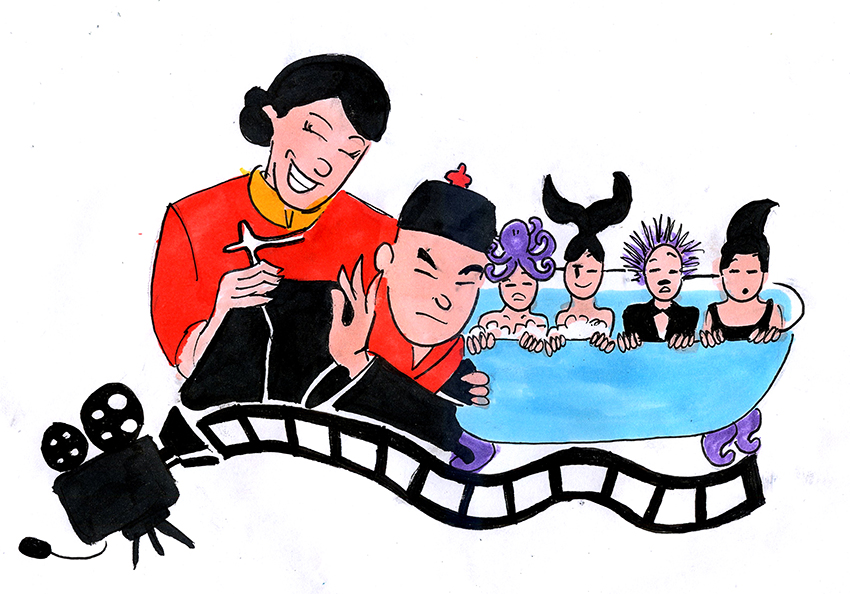Many Southeast and East Asian nations celebrate Lunar New Year, and the films they watch fit into each country’s own distinct customs and traditions to honor
the holiday.
For 20 years, New Year films have dominated the Asian box office, and 2017 will be no exception to the trend. This year sees the release of “Journey to the West: The Demons Strike Back,” a sequel to one of the most successful New Year films. Even the U.S. will join in on the season this year. Zhang Yimou, one of China’s most popular directors, has a new fantasy monster film starring Matt Damon, “The Great Wall,” which will release in the U.S. a little over two weeks after Lunar New Year.
After Hong Kong pioneered the genre in the early ’80s, these blockbuster movies caught on in much of East Asia, but not in China, where films were not even considered a commercial industry yet by the government, with entertainment films having to be imported from neighboring nations.
Chinese film and literature professor Yvonne Chang considered all films of the time propaganda.
“From 1949 to 1976 (films) were propaganda for educational purposes, but then they were shifted back to capitalist mode in the ’80s,” she said. “People studying in the west and from Hong Kong kind of had to introduce the idea of a commercial film.”
Chang credits the first Chinese New Year movie, Feng Xiaogang’s “The Dream Factory,” not just with introducing the genre to the mainland but for expanding Chinese film as a whole into a commercial industry, for better or worse.
“The emergence of New Year films had landmark importance because it opened up this very important position of commercial film in China,” Cheng said. “Commercial film started with Feng Xiaogang. But today, if you talk to Chinese people about New Year films, they are not so excited. They have grown into this mainstream dominant film, very much like Hollywood. After a few years, the films were not as well-made.”
After this initial growth spurt, New Year films ingrained themselves into East Asian culture, and became another one of the many ways people celebrate the holiday. Franny Fang, Accounting senior and president of the Taiwanese International Students Association, loves New Year films and the way they
celebrate culture.
“They’re really funny and you can watch them with your family,” Fang said. “It incorporates a lot of Taiwanese culture. They will use Taiwanese actors and Taiwanese slang.”
Yi Lu, UT alumna who earned a Ph.D. in radio-television-film after studying film at the Beijing Film Academy, said New Year films tend to be of the same comedic, yet shallow breed.
“At the beginning those films tried to create a story that really get into the holiday spirit,” Lu said. “But as time goes on, those are not necessarily this way, but they just try to make people laugh.”
But despite their superficiality, Lu said she loves the impact New Year films have and their newfound importance to culture.
“For Chinese people, the festival is very important to us,” Lu said. “The family gets together, eats and now watching films becomes a part of traditional
celebrating activities.”















